Djamila Knopf on Building a Sustainable Art Career

Hey Djamila! Why don’t we start by talking about your journey so far? We’re all curious about your work, the influences behind it, and any past experiences that helped you become the person you are today.
I’ve been drawing for as long as I can remember, and I was basically the definition of “the artsy kid in class.” I think we all enjoy scribbling when we’re very young, but most of us eventually stop. I just kept going because it was a way to engage with my favourite anime and draw the characters I loved.
In elementary school, I had a big plan of moving to Japan and becoming a manga artist, and while people told me I was pretty good at drawing, they also made it clear that I couldn’t make a living doing art and should pursue a different career.
This is why I enrolled in a university programme to become a teacher for art and English after graduating from school. I also decided to work on my art during my spare time, silently bringing it to a professional level and eventually getting there by the time I graduated uni.
What’s life like for an artist living in Leipzig?
I love Leipzig! It’s where I’ve been living since 2009, and I‘ve never felt so at home in any other place. While I love travelling and exploring new cities, I‘m always happy to come back.
Leipzig has a really vibrant community built around fine art (which isn‘t really my world, to be honest), illustration, concept art, and comics (where I feel more at home). In recent years, I‘ve been fortunate enough to meet many amazing people through conventions, and the result was a regular Drink & Draw and some great friendships. Art can often be a solitary profession, and it‘s reassuring to talk to people who share the same struggles as you and get inspired by them.
Not to mention Leipzig is just a beautiful city! I love the old buildings and the sense of history it has. As someone who loves nature, it‘s fantastic to have so many parks at your doorstep… there’s a whole forest right in the city, and many lakes nearby.
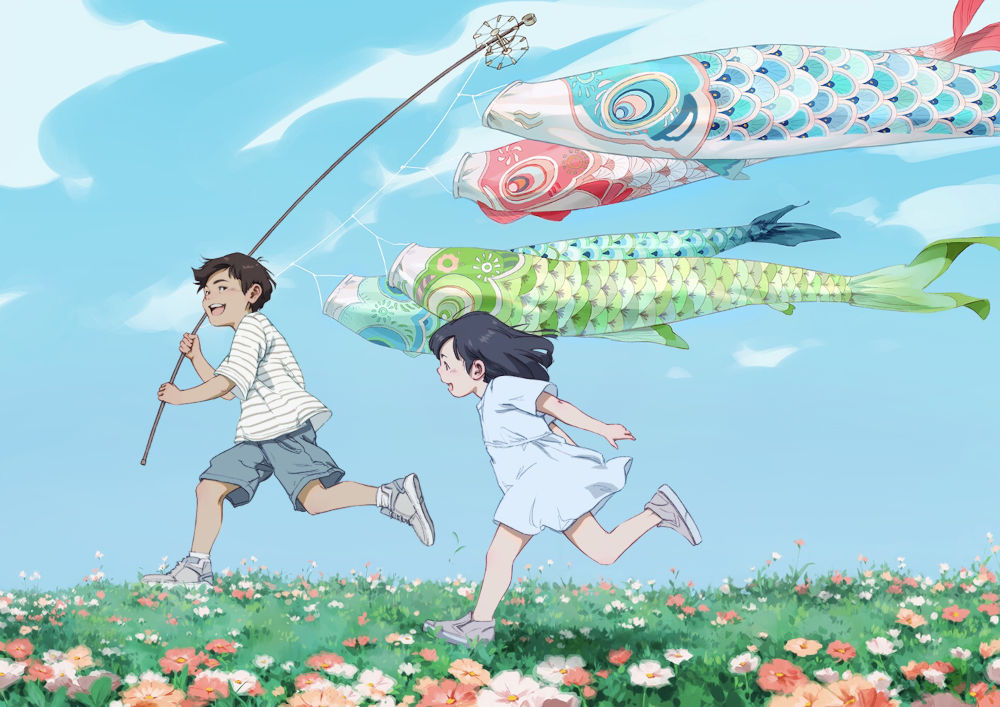
So many of your pieces take me back to the peaceful moments I remember from Miyazaki’s films. The way you translated all that comfort and nostalgia into your own work is my favourite thing about your art. I understand that Studio Ghibli has had a strong influence on you, so please talk to us about your memories of these movies and everything else that makes them so special to you.
I only realised how much background paintings—especially by Studio Ghibli—actually influenced me pretty late in my artistic journey. I used to draw only characters, and I thought I didn’t care about anything else. But then I suddenly found myself drawn to those beautiful, intricate landscapes, and as I reflected on it some more, it all started making sense.
When I think back to my childhood, I most vividly remember the summers I spent with my grandparents in their garden. It was surrounded by nature, and there was so much room to play and explore. I find that Studio Ghibli perfectly encapsulates that feeling of magic and nostalgia, and how a child sees the world: Vibrant colours everywhere and just a bit more beautiful than it actually is.
Years later, I try to capture that same feeling in my artwork and filter it through my own experiences, so Studio Ghibli is a huge inspiration.
I honestly don‘t remember the first time I ever saw a Ghibli movie, but I can tell you now that my favourite ones are Princess Mononoke, Spirited Away, Castle in the Sky, and From Up on Poppy Hill. The only one I haven’t seen yet is Grave of the Fireflies because I know that I‘ll cry my eyes out, and I can‘t bring myself to watch it.
Germany is a beautiful country, and I’m sure its vast landscapes have inspired you for a long time. Do you go out in nature to look for inspiration? We’d love to hear about some of your favourite spots.
This will be a very disappointing answer, but I haven’t travelled around my own country much. We were poor growing up, so there were no “fun family trips to the Black Forest” or anything like that.
Whenever I travel now, I try to get a bit further away and visit some other places in Europe, such as Ireland, Denmark, Sweden, Norway, the Czech Republic, Austria, the Netherlands, etc. I’ve only been able to afford extensive travelling for a couple of years, so I have a lot of catching up to do.
I might actually be the worst person to ask for nice spots in Germany, but I go out to nature where I live whenever I can. I need to recharge and get away from all the noise of everyday life. Especially during quarantine, I prioritised going for daily walks through the parks and forest.
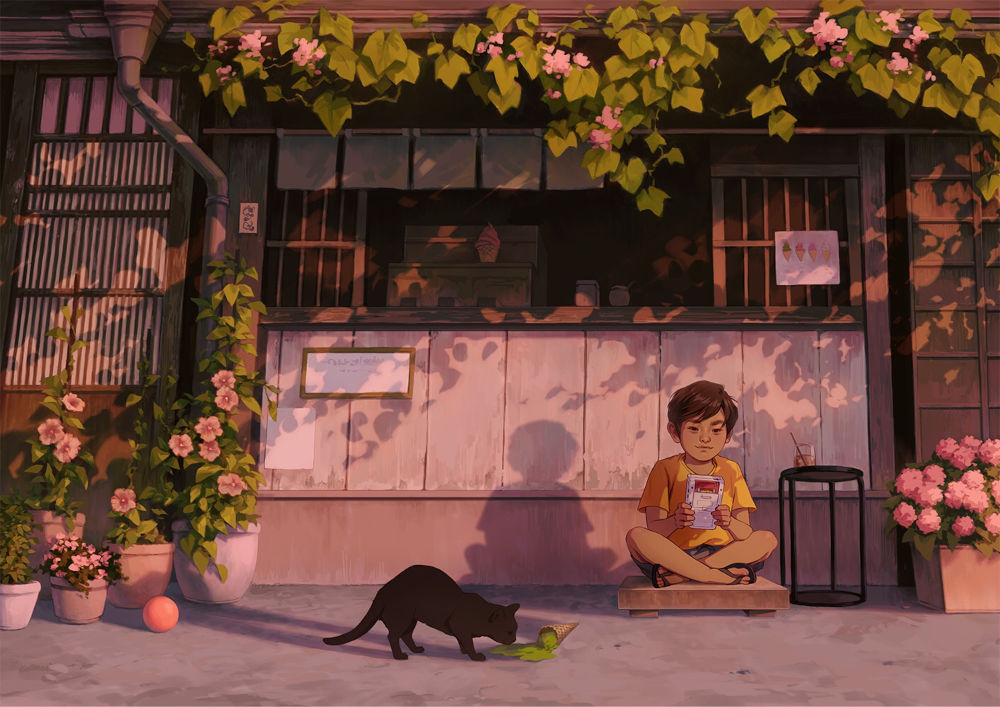
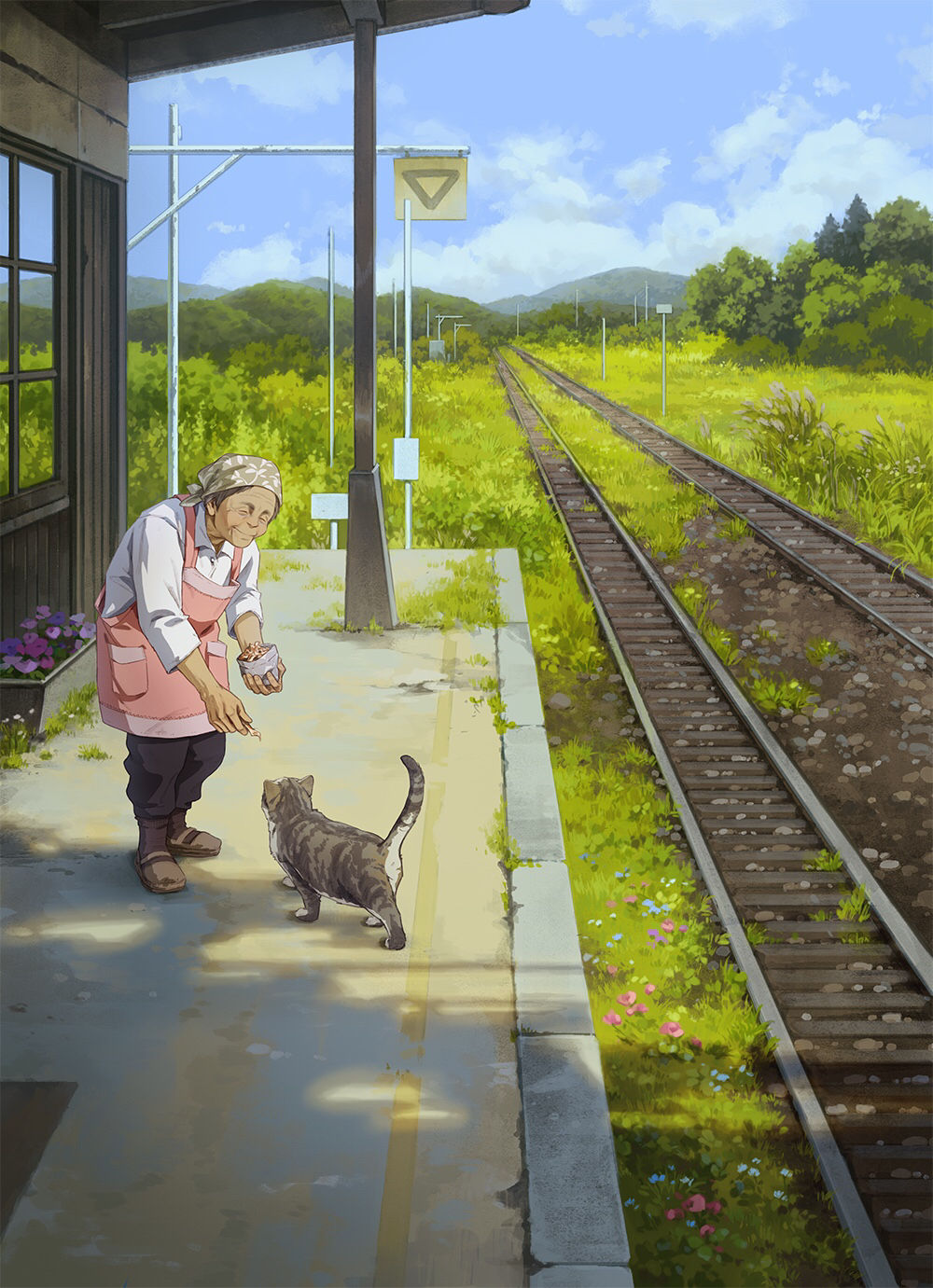
Please walk us through some of the techniques and processes you like to use. Maybe you could even talk about how you created one of your illustrations in specific?
I could try to summarise my process in a paragraph like this, but there are just too many elements to it, and I don’t want to bore you with Photoshop terminology of clipping masks and blending modes. If you’d like to see that process in action, you can watch it on my YouTube channel.
What’s more interesting to me is what comes before the actual painting part.
My illustrations usually start out very vague. I use Pinterest a lot, and I have many boards with pictures that inspire me—a mixture of photographs, drawings and paintings. If something sparks an idea, I develop it further by browsing more related images and writing down word associations. I have a document on my phone that includes a list of illustration ideas that I eventually want to get to and develop further. Right now, among them are “City Pop (80s Japanese music) inspired cityscape” and “Forest with Ojizo statues”, just to name a few.
A simple core idea or feeling is how all of my work starts out. The character design, set design, colour palette, composition etc., are all things I‘ll worry about later. I use a lot of different reference images for a single illustration because I don’t want to stick too closely to a single one.
Doing research for my artwork is a lot of fun and maybe even the most exciting part of the process. I feel like an archaeologist uncovering something and combining pre-existing elements to create something new. The actual painting is then just executing my vision as closely as I can, and the process requires a lot of time, patience, and trial and error.
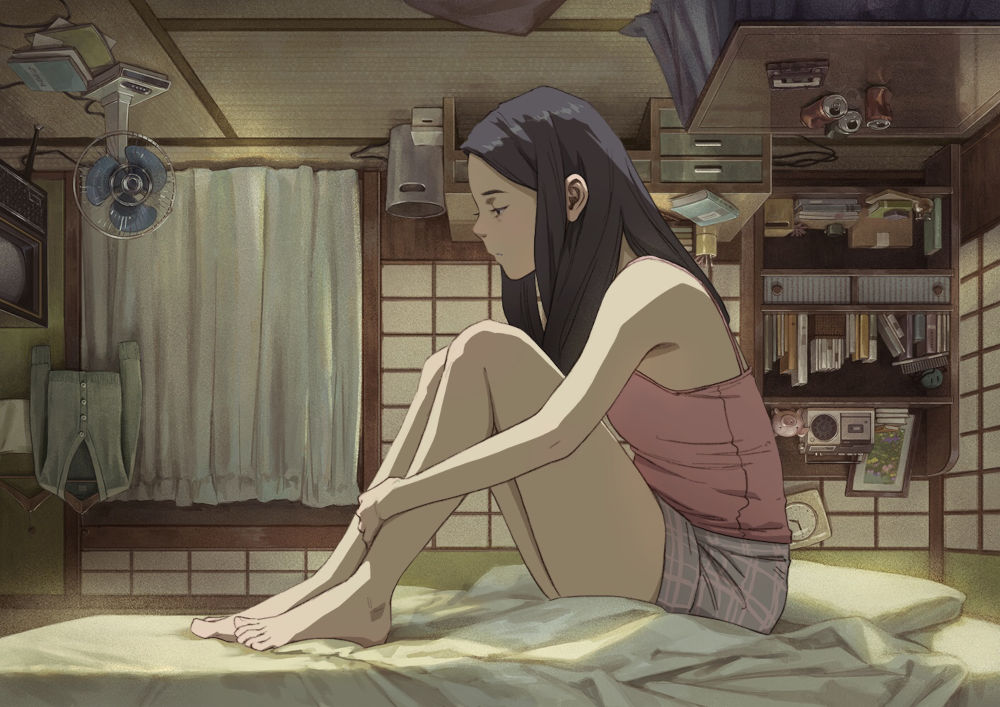
Now that we’ve touched on technique, I’d like to ask you about the true meaning of your art. What are some of the messages you want people to find in a piece by Djamila Knopf?
I think the word “emotion” rather than “meaning” or “message” comes closer to what I’m trying to do.
Sometimes I want a painting to appear cosy, warm and inviting, and I will tailor everything in the piece to accomplish that goal. Whether it’s the environment, the colour palette, the body language, etc.—it should all support the intended feeling. Then maybe for another artwork, I’ll want to evoke a sense of oppression and loneliness, which would require a very different set of decisions.
More often than not, I don’t even think there is a deeper meaning until someone comes along and points it out, and I realise that they might be onto something. I just want to show these little slice-of-life story moments, and I like the idea that viewers can interpret them in their own way. The only thing that matters to me is that I’m able to carry that emotion.
Many artists try to grow their fanbase using social media, but it often doesn’t work as quickly or as well as we might like to imagine. What’s the big secret? How can an aspiring illustrator successfully build a fanbase around their work?
For me personally, social media has been vital in making a living as an artist. All of my patrons and customers find me through various platforms, and I’m pretty sure the size of my audience also played a part in getting an art book deal and teaching opportunities.
I love social media for all that it’s given me, although it might have just been a case of being in the right place at the right time. I started posting on Instagram in 2014 as an early-ish adapter, back when it was still purely image-based and chronological. But now, it is becoming increasingly difficult to navigate, with the ever-changing algorithms and the more recent direction towards video content. Honestly, I feel a bit like a circus monkey who’s being forced to jump through hoops and perform tricks.
The people who thrive on social media these days are the ones that adapt quickly and post regular content that is tailored towards the specific requirements of the platform. I still try to post regularly, but my engagement has gone down as the apps have changed.
I’m not planning on becoming a video creator anytime soon, so I might have to figure out another way to stay relevant. I just don’t want to lose sight of what’s important to me… this is about the artwork. I focus my energy on creating the best art I can, and that is non-negotiable. I don’t want to fall into the trap of letting social media dictate the work I create.
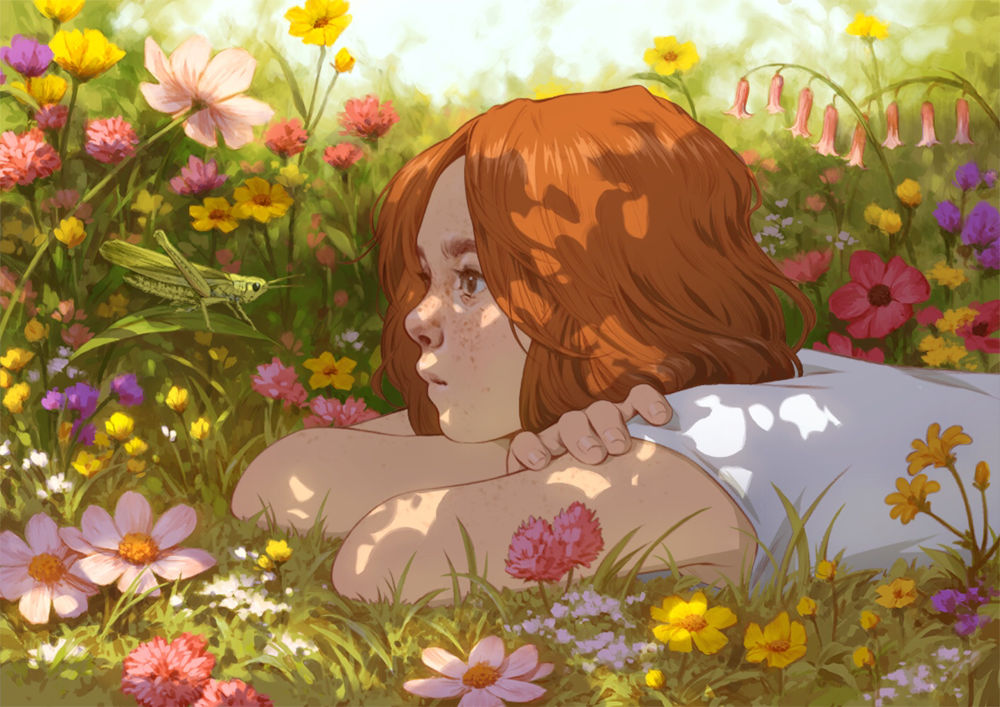
Quitting your job to become a full-time artist can be daunting, but you’ve done it successfully and kept it up for years now. What advice do you have for all the artists who are still considering taking that leap?
If I could go back a few years and give myself a piece of advice, it would be to wait a little longer before jumping into art as a full-time job. When I started out, I took any gigs I could get, mostly with very low pay. So I was forced to work 7 days a week, 12 hours a day, just to make a living. It was detrimental to my health, well-being, and creativity. In hindsight, it would have been better to hone my craft a bit more while working a non-art job until I was actually ready and able to get bigger jobs and clients.
Other than that, if you want to be an independent artist, I think it’s a good idea to build up different income streams. Especially with the pandemic, we’ve seen that whole branches (such as retail, events, etc.) suddenly broke off and left people without options.
I was fortunate enough to still have the support of my patrons, my online class, and my artbook sales through my publisher, even though I had to close my online shop for months and couldn’t sell at conventions.
That safety net I had built up really did save me. I generally think that it’s good to stay open and curious when it comes to business-related things. Most artists just want to do the art and find the other stuff annoying, but if you manage to find a little joy and playfulness in it, it can help your career in many ways. Personally, I like to look at what my art friends and role models are doing with their businesses and try to emulate whatever makes sense.
What’s next for Djamila Knopf?
Right now, my big goal is to fill a second artbook! It might take a while, though, since I’m focusing on highly detailed illustrations at the moment. But I’m really excited about them, so I think it’s worth it.
I don’t have any big career goals at the moment… I just enjoy my day-to-day life, and I’m grateful that I get to paint for a living.
In terms of my personal life, I’ve been putting a lot of energy into studying Japanese in anticipation of future travels. I just can’t wait for international to open up again so that I can make up for all this lost time. I have a long list of places that I want to visit in Japan, and I hope to come back with a lot of new inspiration.
If you enjoy Djamila’s work, consider visiting her website or following her on Twitter.
Please donate to perephoneia.art if you liked this interview. Your support helps cover the hosting costs for the website, keeping it free and online for others to discover.
